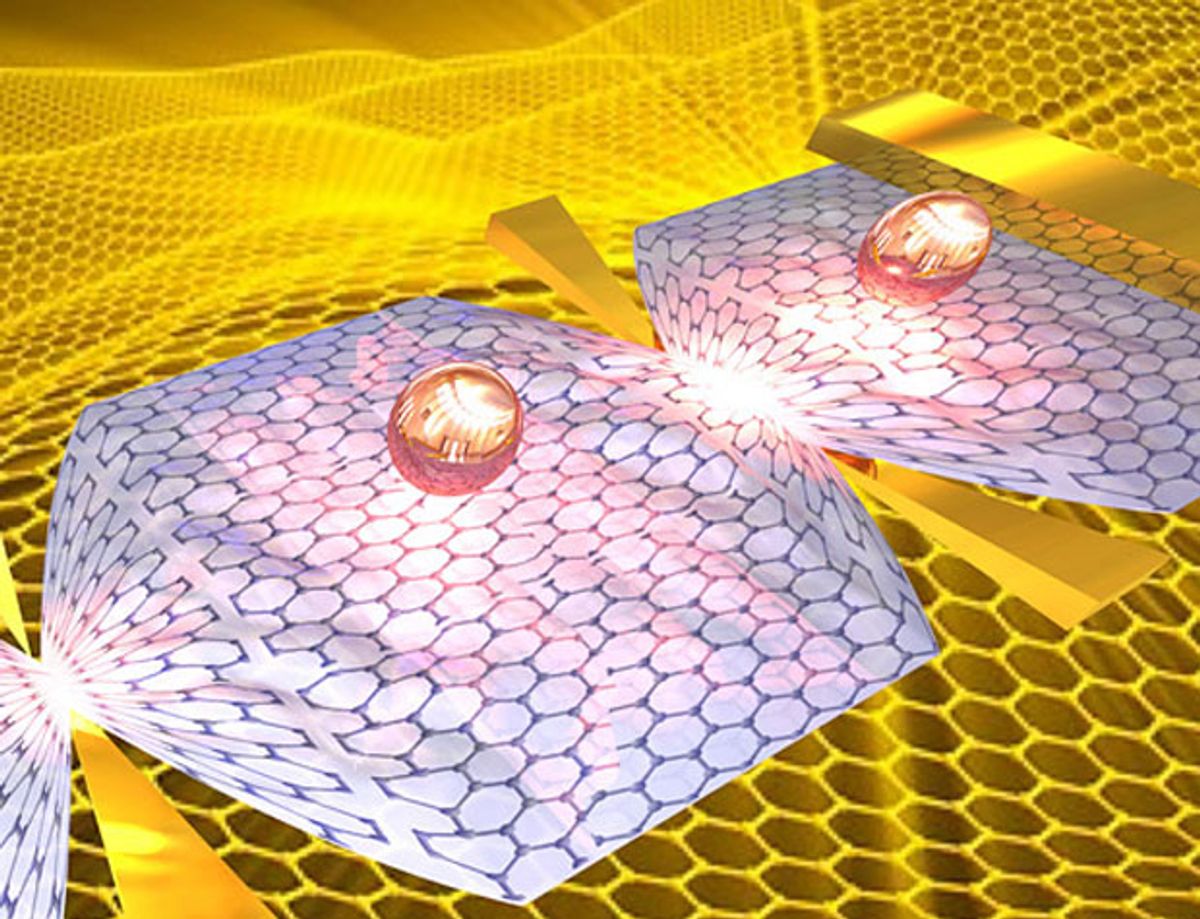Graphene’s potential applications in photovoltaics (PVs) have remained fairly limited. Nanomaterials of nearly every stripe, including quantum dots, nanowires and carbon nanotubes, have offered alternatives in the solar collecting cells of PVs. But research has really only offered graphene as a replacement to indium-tin-oxide (ITO) used in the electrodes for organic solar cells.
The research, which was published in the journal Nature Physics (“Photoexcitation cascade and multiple hot-carrier generation in graphene”), has demonstrated that graphene is capable of converting one photon into multiple electrons, leading to electric current.
Until now, researchers had been looking at quantum dots to generate electron multiplication or creating so-called “hot carrier” cells in PVs. While this line of research has gained some skeptics, it has been pursued for nearly a decade. The international team in this latest research has demonstrated that graphene can be used to create these hot carrier cells.
“In most materials, one absorbed photon generates one electron, but in the case of graphene, we have seen that one absorbed photon is able to produce many excited electrons, and therefore generate larger electrical signals" explains Frank Koppens, group leader at ICFO in a press release.
In their experiments, the researchers excited the graphene by exposing it to photons of different energies (colors). They then measured the resulting hot-electron distribution with a Terahertz pulse and determined that higher photon energies (violet) resulted in higher numbers of hot electrons than lower photon energies (infrared).
“The observed relation between the photon energy and the number of generated excited electrons shows that graphene converts light into electricity with very high efficiency,” says Klaas-Jan Tielrooij, one of the researchers in Koppen’s group at ICFO, in a press release. “Even though it was already speculated that graphene holds potential for light-to-electricity conversion, it now turns out that it is even more suitable than expected."
The problem with graphene in this area of PVs remains its low absorption. However, the researchers are encouraged to tackle this issue, because of the success they had in getting high-energy conversion figures out of the material.
Koppens adds: “Now we know that once the material has absorbed light, the energy conversion efficiency is very high. Our next challenge will be to find ways of extracting the electrical current and enhance the absorption of graphene. Then we will be able to design graphene devices that detect light more efficiently and could potentially even lead to more efficient solar cells."
Image: ICFO The Institute of Photonic Sciences
Dexter Johnson is a contributing editor at IEEE Spectrum, with a focus on nanotechnology.




